How to build Connectors & Tables in Saviynt Integration
Saviynt Data Integration Process
Let me walk you through the process of creating and managing data tables in Saviynt.
First, you define your primary key ‘ID’; next we assign a First Name column which should use type ‘varchar’ to allow input of up to 255 characters at once; similarly we also create Last Name columns using similar data types with same character limits to form our backbone of Saviynt data tables.
Let’s add two columns now – Status Key and Email ID. Status Key represents active statuses with characters of type varchar.

‘Email ID’ allows us to store more characters for detailed entries. Once these two are set, press ‘Apply’ to complete the table structure.
Building Connectors in Saviynt
Building connectors is key for data integration in Saviynt. Enter user data, such as ID, First Name, Last Name, Status Key, and Email ID, into a table.
Ensure that no data is duplicated by checking Saviynt’s repository. Navigate to “Admin”, select “Identity Repository”, verify the details, and then.
Once users are confirmed as new entries, start building the connectors. Map column values, such as IDS, First Names, Last Names, and email addresses, from your trusted database into Saviynt.
Using our “Import User” table, we can seamlessly import these values, allowing Saviynt to access user data efficiently.
Unique Attributes in Saviynt
Saviynt ensures data integrity by assigning users unique identifiers, such as username and System Username, to each record, thereby providing uniqueness across tables.
The username is obtained directly from the target applications, while the System Username is obtained directly from Saviynt. This separation helps maintain unique user records across tables.
Corporate environments often append usernames with prefixes, such as ‘T’ for employees and ‘X’ for contractors, to directly identify user types by username.
For instance, a username like 00123 may be converted to T00123 for employees and X00123 for contractors, making data management much more straightforward for organisations.
Saviynt’s Logic for User Records
Saviynt incorporates logic for effectively managing duplicate usernames. If two users share the same name, Saviynt uses the system username to differentiate them and ensure consistency, while preventing potential data conflicts.
Saviynt utilises unique attributes from each table when integrating multiple tables, such as the User Table, Account Table, and Entitlement Table, into its platform to reference records across databases for seamless data operations and management within Saviynt’s environment.
This design ensures smooth operations and robust management within its ecosystem.
Saviynt User Data Integration
Saviynt provides an intuitive method for efficiently managing user data with pinpoint precision.
When working with user attributes, it is essential to distinguish between system and personal usernames to ensure accurate handling.
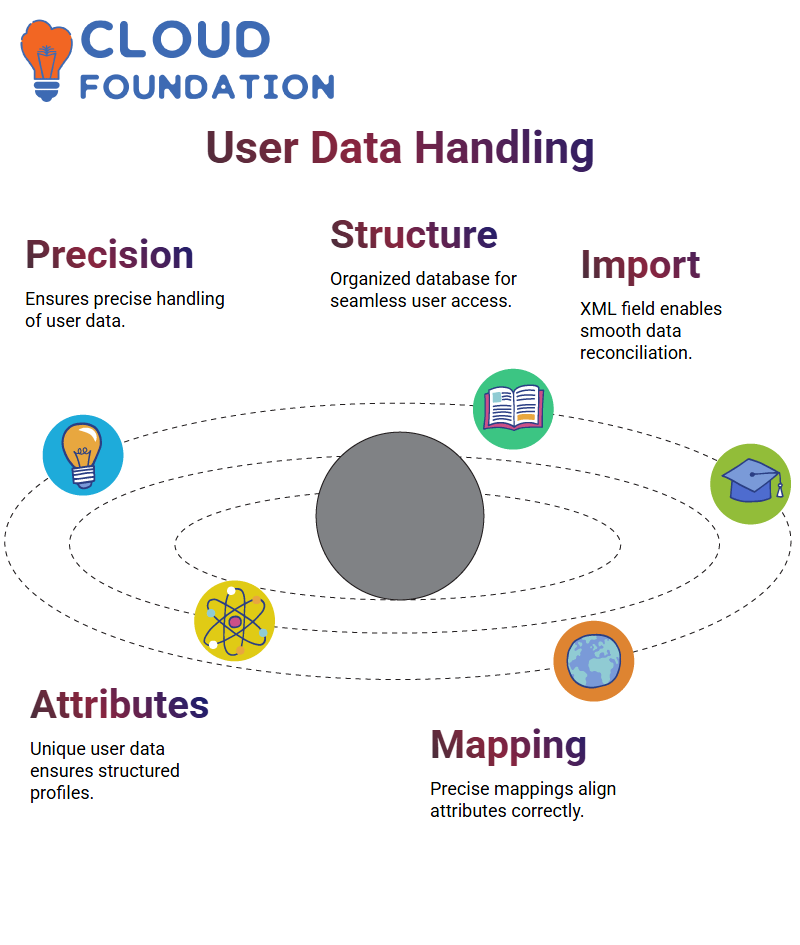 Saviynt’s database has been carefully organised for user accessibility. By including an XML user import field in our system, we ensure seamless reconciliation of user records within Saviynt.
Saviynt’s database has been carefully organised for user accessibility. By including an XML user import field in our system, we ensure seamless reconciliation of user records within Saviynt.
Saviynt’s Unique Attributes
Saviynt provides every user with their own set of attributes for more efficient data management, including first name, last name, status key and email.
These attributes play a pivotal role in maintaining structured user profiles within Saviynt.
Data reconciliation within Saviynt requires precise mappings between values; for example, the first name maps to its corresponding database field, while the last name follows suit, and email attributes are aligned accordingly.
Configuring User Import in Saviynt
Setting up Saviynt requires accurately importing user data. We create an XML file tailored specifically for Saviynt’s format and set up SQL queries to facilitate a smooth import process.
Saviynt utilises JDBC connections to facilitate communication between databases.

By properly configuring connection parameters, such as hostname, port, and database name, Saviynt ensures seamless integration of user records into databases.
Troubleshooting Saviynt Connection Issues
Configuring Saviynt can sometimes result in connection issues due to improper parameters being entered.
Debugging errors through application logs helps identify any problems and ensures a correct setup for Saviynt.
At Saviynt, users must ensure that the correct database driver and format are used.
With proper troubleshooting techniques in place, connectivity between trusted sources and Saviynt user tables should run smoothly.
Data Management with Saviynt
Let me illustrate how Saviynt can efficiently handle database data.
Imagine you already have records inserted, ready for consumption by Saviynt, but how will we move them over? Creating jobs within Saviynt becomes essential here; these jobs help move data through connectors seamlessly, ensuring the smooth movement of records across connectors.
At Saviynt, our job roles are designed for specific tasks – think of them like workforce members who transport data between points.
Each job not only collects it but also ensures its delivery at its designated spot – we must set these roles up properly so as not to compromise our processes or security.
Creating Jobs in Saviynt for Data Transfer
Implementing jobs in Saviynt is intuitive and straightforward. Consider an electrical bulb: before turning it on, its light won’t come on until it’s switched on.
Your data and connection are already established. All it needs to trigger its process is creating a job to link your database and connector for seamless data transfers.
Access the Job Control Panel through Saviynt’s Administrator Tab, where you can access its Job Control Panel, from which you will have options to create new jobs, such as “Database Training Import.”
Once created, connect it to relevant connections or databases before leaving it all up to Saviynt to handle.
Saviynt Jobs: User Input and Data Mapping
Saviynt offers various job types, including full and incremental reconstructions, as well as user input jobs with complete user input support.
When setting up an input job, provide its connection name before allowing Saviynt to execute it. This way, any issues, such as missing XML attributes in data mapping, can be identified and corrected at an early stage.
Data mapping in Saviynt ensures all attributes are correctly aligned. If any mapper attributes are missing an end tag, they can be easily adjusted directly within job settings.
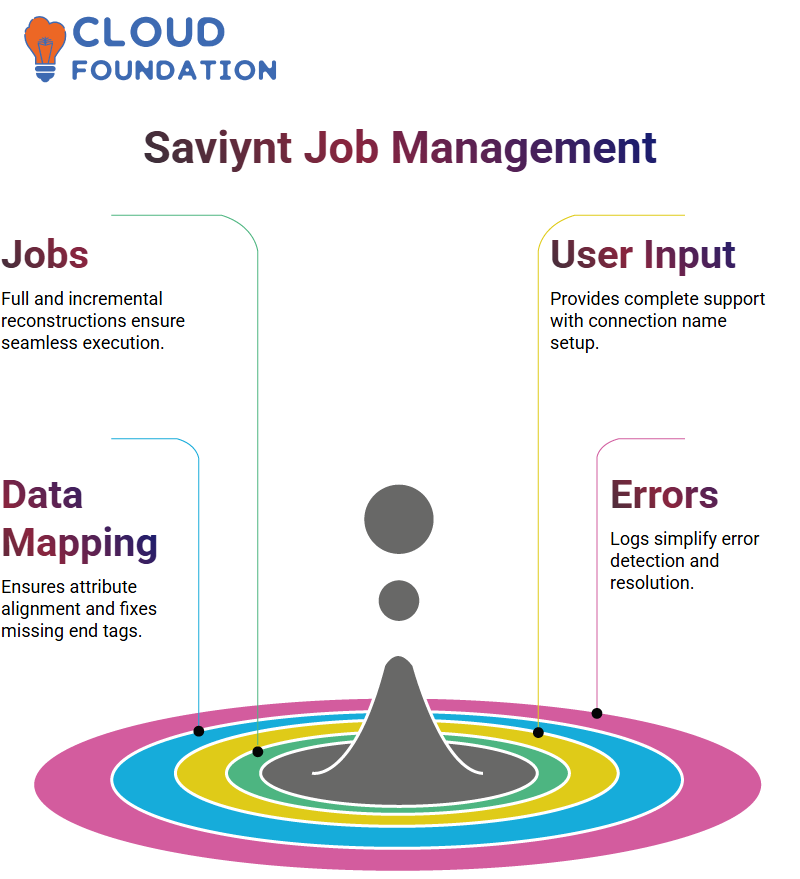
Once resolved, you can rerun your job to see the successful transfer in the logs, making troubleshooting simple. Saviynt makes troubleshooting an effortless experience.
Saviynt’s Efficiency in Handling Connections
Saviynt excels at managing connections. From initialising database connections to running select queries, Saviynt ensures everything runs seamlessly, including retrieving user details such as ID, email, and status for efficient provisioning processes.
Saviynt also supports various configuration options, such as setting zero-day provisioning to false.
Logs provide valuable insights into job progress, as well as any configurations applied during the execution of each job, ensuring that your data is handled appropriately and efficiently.
Monitoring and Troubleshooting Jobs in Saviynt
Monitoring jobs with Saviynt is straightforward. Once a task has run, check its logs for its progress from connection creation through data import.
Any potential errors, such as missing attributes, can be quickly identified and addressed.
Rerunning jobs using Saviynt ensures that all settings have been applied accurately, while logs provide confirmation and detailed information on the processed data.
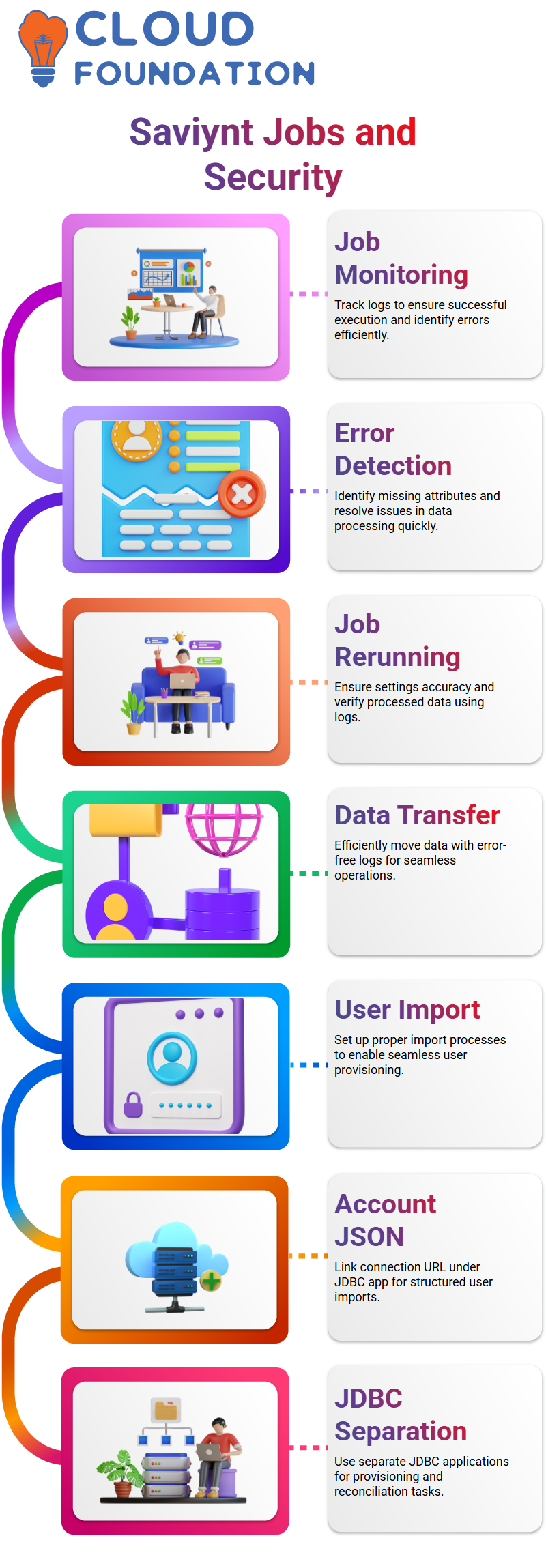
With its efficient data transfer processes and error-free data logs, it gives a sense of peace of mind.
Setting Up Saviynt for User Import and Provisioning
Are You New to Saviynt and Wondering How to Import Users Effectively? Allow me to show you through this process.
Imagine user import as the foundation; having one set up correctly allows it to flow seamlessly with provisioning users. Similarly, “Create Account JSON” plays a crucial role; link its connection URL, which contains your database name, under the JDBC app for a seamless import or provisioning process using specific tables, such as “import_user” or “db_account”.
As different databases require separate connections, one JDBC application connection cannot suffice for all your needs.
A JDBC app may handle provisioning while also handling user imports and trusted reconciliation, respectively; however, mixing these tasks in a single connection would be infeasible.
Dynamic Attributes in Saviynt
Setting up your Saviynt account requires understanding dynamic attributes.
What exactly are we fetching at runtime with $$’s? For instance, Saviynt dynamically fetches runtime values, such as usernames and email IDS, explicitly tailored for each user, ensuring unique data while maintaining efficiency.
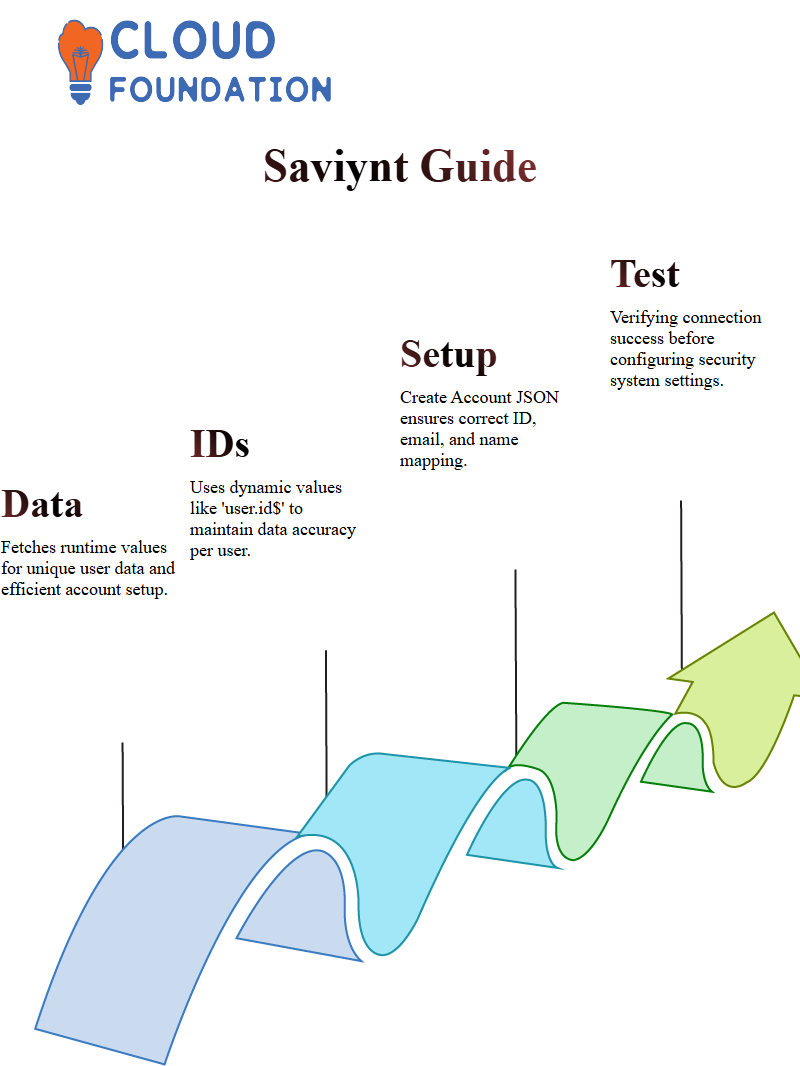
Imagine yourself ordering something online; while providing various details, your name and mobile number serve as unique identifiers, in Saviynt, dynamic values, such as ‘user. id$’, ensure that each user’s data remains distinct and accurately mapped to them.
Provisioning Connections in Saviynt
Establishing a provisioning connection in Saviynt requires several key steps. Begin with the “Create Account JSON”, verifying that it passes accurate values into columns such as ID, email, and name.
Once complete, test your connection to ensure success before configuring security system settings.
Security systems work in conjunction with your connections and include workflows such as access approval and removal processes to enhance safety and privacy.
In critical applications, approval from management or application owners may be required; for basic needs, auto-approval workflows can help expedite the process more easily.
Endpoints and Attributes in Saviynt
Once your security system has been configured, the next step in setting up endpoints is to assign them specific names that enhance clarity and consistency across systems.
Using a system similar to your security system can prove especially effective for straightforward navigation.
Endpoints involve setting account name rules to govern how users are provisioned into target applications.

For instance, unique attributes like ‘username’ help Saviynt locate and map user records in target databases with precision, enabling smooth provisioning and accurate handling of user information.
Saviynt Security Systems
Let me demonstrate how Saviynt simplifies the management of endpoints and security systems.
Once you access the platform, it becomes readily apparent how a particular security system and endpoint work together. Imagine an endpoint with attachments being part of a Saviynt security system, designed to bridge data storage or communication gaps.
Saviynt ensures that your provisioning connects work smoothly, making it effortless for users to create accounts in databases like JDBC_APP, which store user data, including tables of accounts, attributes, and essential details such as IP addresses and port numbers.
Saviynt excels at data validation with its dynamic process for checking attributes, such as ID, email, username, first name, and last name, before inserting data into its dv_account table.
Each request for users undergoes thorough scrutiny for optimal accuracy and efficiency.
Saviynt’s Role in Bridging Endpoints and Connections
Saviynt provides security systems that extend beyond identity management, serving as vital bridges that seamlessly link endpoints and connection details, filling any gaps that exist and facilitating seamless communication among systems.
Saviynt Active Directory stores connection and workflow details without actually storing user data; endpoints contain this user data for optimal processing efficiency while maintaining accuracy and reliability.
Saviynt facilitates this connection seamlessly.
Requesting Access with Saviynt
Utilising Saviynt for access requests is user-friendly. As an administrator user, I can pick any user and grant them access to specific applications or data through Saviynt’s workflow system, making the entire approval process efficient and user-friendly.
Saviynt’s use of workflows, such as auto-approval, helps ensure that requests are processed efficiently and delivers a positive user and admin experience by seamlessly integrating connection information, provisioning, and endpoints into a single, unified system for both users and administrators.
Saviynt’s User Provisioning
Saviynt makes user provisioning seamless and efficient, eliminating the need for manual approval from non-critical applications by automating the approval process.
Once approval has been given, a unique Request ID will be generated along with an associated task identifier to facilitate further action on Saviynt’s part.
Let me guide you through the process step by step. For instance, when you click a task ID, such as 921, it appears automatically, and its status has also been updated with the Saviynt Security System for easy handling and further progress on your assignment.
Saviynt offers two methods for you to pass Request IDS when processing requests: the admin menu and control options, or using the ARS menu under Pending tasks.
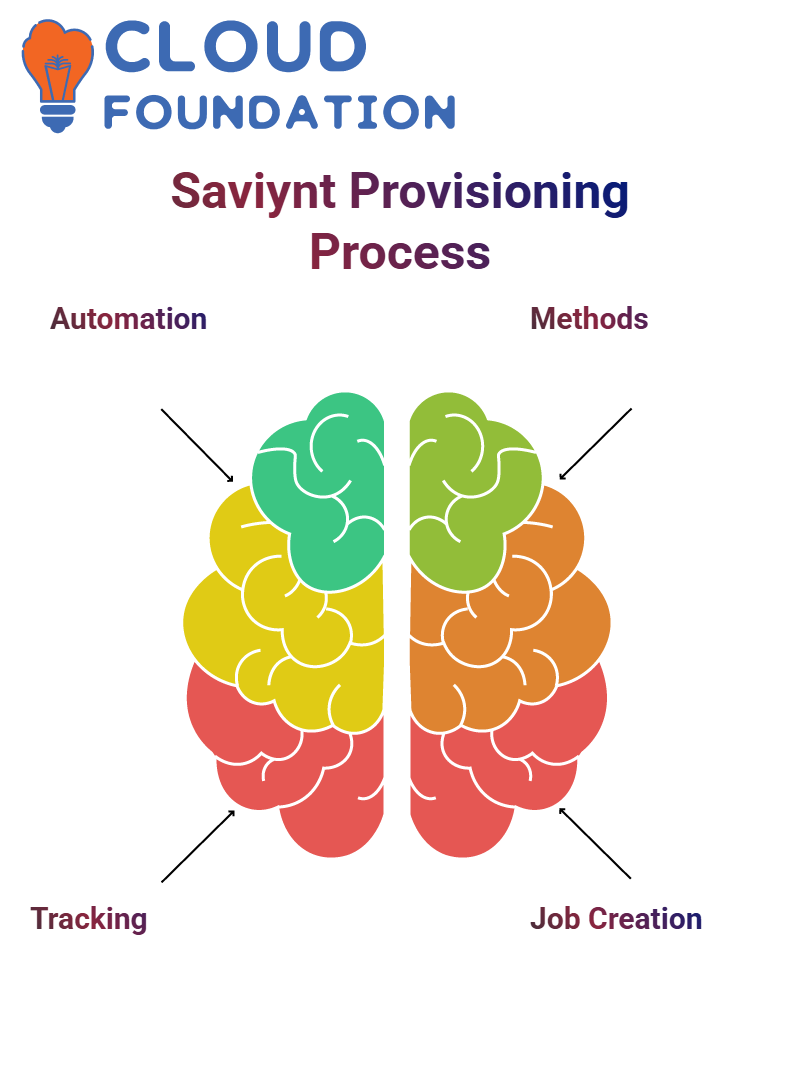 Should you ever lose track of the Request ID, don’t panic — the latter method provides quick retrieval.
Should you ever lose track of the Request ID, don’t panic — the latter method provides quick retrieval.
Saviynt simplifies job creation with our Job Control section in the admin menu, where you can either select an existing job to modify or create a new one from scratch.
Once selected, choose an application, such as a database, and then select the task type ‘new account’ to initiate the provisioning process.
As your job runs, keep the application log open for easy monitoring of its progress.
Should any errors arise, Saviynt provides detailed logs that detail issues such as mismatched column counts or repeated attributes, making troubleshooting straightforward and allowing conflicts to be quickly resolved before running another provisioning job efficiently.
Saviynt provides error-free provisioning by offering accurate logs and permitting adjustments. Once corrections have been implemented, the job can be rerun to monitor its progress, eventually turning pending tasks into completed jobs to verify successful provisioning.
Saviynt excels at directly linking user accounts with target applications, such as databases. Users can easily view linked accounts and retrieve records seamlessly, accessing user data through Saviynt’s identity repository.
Streamlining Account Provisioning with Saviynt
Saviynt excels in account provisioning. With features like the familiar “Add to Cart,” Saviynt streamlines access to requests and account setup, while efficiently managing workflows to ensure data validation and accurate storage of user details.
Saviynt connects applications, databases and endpoints seamlessly for seamless system integration.
Administrators can effortlessly request access, validate workflows and configure auto-approval processes with this innovative approach from Saviynt.

Resolving Errors in Saviynt Provisioning
Errors during provisioning in Saviynt aren’t just setbacks — they provide opportunities to refine processes.
If repeated attributes cause issues, delete those duplicates before changing any configuration settings and saving your changes.
Utilising Saviynt’s administrative controls, you can rerun a provisioning job to ensure everything goes according to plan.
Logs enable error identification, while menu options simplify navigation and help complete outstanding tasks.
Once provisioning has been completed, user accounts can be verified in your security system through endpoint tabs. Saviynt offers advanced views for effective tracking of provisioning results.

Vinitha Indhukuri
Author



